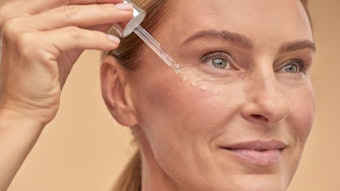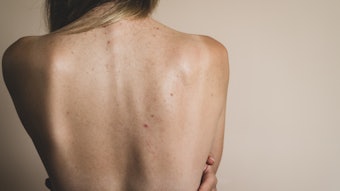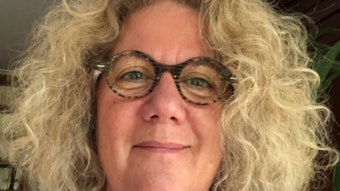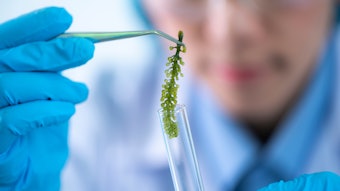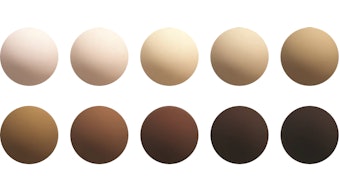Patent Picks are compiled by the editors from publicly available sources. This edition features recent inventions related to repairing, restructuring and other novel effects in skin care.
Log in to view the full article
Patent Picks are compiled by the editors from publicly available sources. This edition features recent inventions related to repairing, restructuring and other novel effects in skin care.
Thermal nanoparticle anti-acne treatment
U.S. Patent 8834933
Publication date: Sept. 16, 2014
Assignee: Sienna Labs, Inc.
Described herein are nanoparticles and formulations for cosmetic, diagnostic and therapeutic applications, as well as methods involving light and lasers for the treatment of skin disorders such as acne. According to these inventors, while current laser therapies to treat skin ailments exist, for laser therapy to achieve its full utility, methods to locally induce photo-destruction in skin structures without affecting surrounding tissues must be achieved. Provided herein are new compositions and methods useful in the targeted thermo-modulation of target cell populations and target tissues. For example, in one embodiment, a composition is provided comprising a plurality of plasmonic nanoparticles in an amount effective to induce thermo-modulation in a target tissue region with which the composition is topically contacted.
Novel scaffold anti-wrinkle agents
U.S. Patent 8835498
Publication date: Sept. 16, 2014
Assignee: Pola Chemical Industries Inc.
Disclosed in this patent are anti-wrinkle agents having novel scaffolds that are suitable as components for preparations such as cosmetics. The agents comprise compounds represented by Figure 1, stereoisomers thereof, or pharmacologically acceptable salts thereof, and have excellent efficacy in improving wrinkles and sagging caused by increased age or as a result of photoaging.
Specifically, in this formula, R1 represents a hydrogen atom or a 1 to 8 carbon straight or branched alkyl group. R2 represents -SH, -SO3H, -S-S-X1, -S-X2, -SO-X3, -SO2-X4, -SO2-NY1-X5 or -SO2-NY2-Y3. X1-X5 independently are hydrogen atoms, 1 to 8 carbon aliphatic hydrocarbon groups, or a 5 to 12 carbon aromatic moiety wherein carbon atoms may be substituted with heteroatoms. Y1 to Y3 independently represent hydrogen atoms or 1 to 8 carbon linear or branched alkyl groups. R3 represents a hydrogen atom or acyl group having a 1 to 8 carbon straight or branched alkyl chain. R4 represents a 5 to 12 carbon aromatic group or polycyclic condensed aromatic group that may have unsubstituted or substituted groups. Finally, m represents an integer 0-3 and n represents the integer 1 or 2.
Non-thermal electroporation to create extracellular matrix
U.S. Patent 8835166
Publication date: Sept. 16, 2014
Assignee: The Regents of the University of California
This patent describes the development of extracellular matrix (ECM) material by subjecting a target area to non-thermal irreversible electroporation (NTIRE) with a pulsed electrical field to kill cells without causing thermal damage. After the immune system removes the dead cells, and before there is any detectable growth of new cells, the tissue is removed and transplanted to a repair site in the same or another mammal. The patient may be human and the tissue may be any type of tissue; for example, a portion of an artery or small intestine. In the case of ECM grafting, it may be seeded with live human pluripotent cells for use as a medicament for tissue or cosmetic repair.
O/W self-emulsifying and water gel-forming waxes
WIPO Patent Application WO/2014/134732
Publication date: Sept. 12, 2014
Assignee: Intelactive S.A. and A. Thibodeau
This invention relates to the surprising discovery of a wax having o/w self-emulsifying properties due to synergic action between its principal components. Also described are waxes having stable o/w, emulsion-forming properties and, in some embodiments, stable gel-in-water-forming properties that are useful for cosmetic applications. The waxes generally comprise: a) polyglyceryl fatty acid ester, b) a glycerol fatty acid ester, and c) a fatty alcohol. In particular embodiments, the polyglyceryl fatty acid ester can be a polyglyceryl-2, -3 or -4 fatty acid ester, and the fatty chain lengths of a-c can range from C12 to C22. In one aspect, the invention relates to a method for reducing and/or preventing skin barrier function disruption, or for accelerating skin barrier function recovery or repair.
Salmonidae leukolectin to repair and restore skin
U.S. Patent Application 20140255455
Publication date: Sept. 11, 2014
Assignee: Aqua Bio Technology ASA
According to these inventors, there remains a need for treatments suitable for promoting the aesthetic appearance of skin, especially for restoring a youthful appearance or for improving superficially damaged skin, e.g., scars or blemishes resulting from damage to the epidermis and/or dermis. Certain molecules found in Salmonidae hatching fluid, specifically a polypeptide known as leukolectin, have surprisingly been found to effectively provide these improvements. Described in this patent are thus cosmetic compositions including polypeptides obtained from Salmonidae hatching fluid.
Elastin digest for increased skin elasticity
U.S. Patent 8828927
Publication date: Sept. 9, 2014
Assignee: Human Matrix Sciences, LLC
Described in this patent are compositions incorporating an elastin digest that stimulate the endogenous production of elastin and enhance the elasticity of skin. They do so by providing an external supply of elastin peptide precursors that penetrate the tissue to which they are applied. The elastin digest disclosed is derived from proteolytic digestion by proteinase K. It is provided in a mixture of elastin peptides of the sequence GXXPG, wherein X represents a natural amino acid. The elastin digest may also comprise epitopes of cytokines, growth factors and dipeptides.
Thermally regulated cosmetics
WIPO Patent Application WO/2014/133957
Publication Date: 09/04/2014
Assignee: ELC Management, LLC
This invention relates to cosmetic compositions including at least one phase-change material (PCM) and methods for maintaining the cosmetic product user's skin at a comfortable temperature. The composition manages temperature changes in the microenvironment of the face and neck, allowing heat from the body to be continually absorbed, stored and released. Thus, the skin feels fresher and the foundation, either incorporating the PCM or worn over the PCM, also remains even in appearance. The compositions feel and look natural on the skin while feeling comfortable even during strenuous physical exertion or in extreme temperature environments, i.e., very cold, hot and/or humid. In relation, DNA repair enzymes and SPF compositions may be included in the composition.
Rebaudioside A to regulate melanocytes
WIPO Patent Application WO/2014/132219
Publication date: Sept. 4, 2014
Assignee: L'Oréal
Described herein is a cosmetic composition incorporating rebaudioside A and at least one nonionic oxyethylenated compound; the invention also relates to stabilizing rebaudioside A in the aqueous phase of the composition. The disclosed treatment stimulates, restores and/or regulates the metabolism of skin melanocytes to prevent, reduce and/or treat skin complexion impairments; lighten the skin; and prevent and/or treat the signs of aging in skin.
